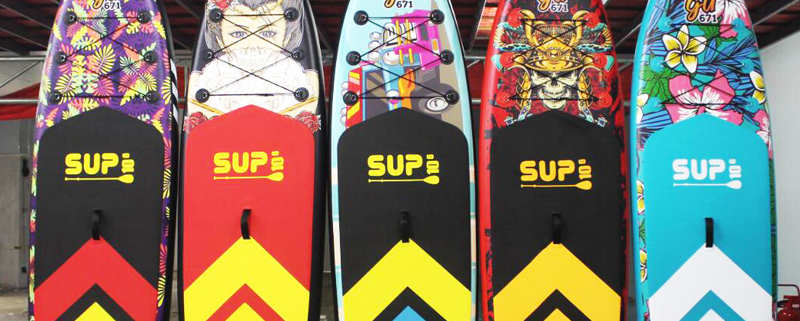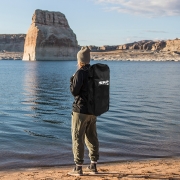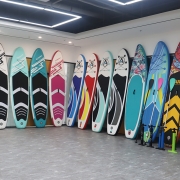How to Choose the Right Surfboard for You
Surfing is an exciting and challenging sport, but choosing the right surfboard is essential to fully enjoy it. Whether you’re a beginner or an experienced surfer, finding the board that suits you can greatly improve your surfing experience. This article will guide you through how to choose the right surfboard, from basic factors to selecting different types of boards.
1. Consider Your Surfing Experience
The first thing to consider when choosing a surfboard is your surfing experience. If you’re a beginner, you might need a larger, more stable board to help you balance and catch waves more easily. For those with experience, there is a wider range of boards to choose from, depending on your personal style and surfing preferences.
- Beginners: Most beginners need a larger surfboard, usually a longboard. Longboards are typically around 9 feet in length, offering more stability. This makes it easier for beginners to stand up and gives them more time to adjust their posture. Longboards also make it easier to catch small waves, helping you build confidence.
- Intermediate surfers: If you have some surfing experience, you might consider using a fish board or a hybrid board. These types are shorter than longboards and offer better flexibility, allowing for faster turns while still maintaining some stability.
- Advanced surfers: For experienced surfers, shortboards are usually the best option. Shortboards are shorter, usually around 6 feet, and are more agile, making them suitable for quick turns and advanced surfing maneuvers.
2. Impact of Weight and Height
Your weight and height are other important factors when choosing a surfboard. Heavier surfers need a larger surfboard to provide more buoyancy and stability. On the other hand, lighter surfers can opt for smaller boards.
- Heavier surfers: If you weigh more, you may need a thicker or wider board to ensure enough buoyancy. More buoyancy makes it easier to stay afloat, making it easier to catch waves and maintain balance.
- Lighter surfers: For lighter surfers, a thinner or narrower board can make it easier to move and perform maneuvers on the wave. A board that is too big might feel cumbersome.
3. Choosing a Surfboard Based on Wave Types
Different wave conditions require different surfboards. If you often surf on small or gentle waves, a longer, wider board will help you catch more waves. If you surf in locations with big and powerful waves, a shorter and more agile board will be a better fit.
- Small or gentle waves: Longboards or fish boards are ideal for catching small waves because they offer more stability and buoyancy. These types of boards allow you to still enjoy surfing even in calmer conditions.
- Big or strong waves: Shortboards perform better in big or strong waves. Their agility and quick turns help you navigate more challenging waves.
4. Surfboard Materials
The material of a surfboard directly affects its performance and suitability. Modern surfboards are mostly made from foam or fiberglass, and each material has its pros and cons.
- Foam boards: Foam surfboards (Soft Top) are ideal for beginners. They are lightweight, have great buoyancy, and their soft surface reduces the risk of injury. Foam boards are also more affordable but have limitations in terms of flexibility and speed.
- Fiberglass boards: Fiberglass surfboards are more suitable for those who have already mastered basic surfing skills. These boards are harder and offer better speed and control. Fiberglass boards tend to be more expensive and are more prone to damage, such as cracks, when they hit something.
5. Shape and Design of the Surfboard
In addition to size and material, the shape and design of a surfboard also affect its performance. Features like the tail shape, rocker (the curve of the board’s bottom), and overall outline all play a role in how the board handles in different conditions.
- Tail shape: The tail shape of a surfboard determines how it turns. For example, a fish tail works well in small waves, offering extra stability and speed. On the other hand, a pin tail is better suited for large, intense waves because it helps the surfer maintain better control in rougher conditions.
- Rocker: The rocker, or the curve of the board’s bottom, impacts how it glides and turns on the water. A flatter rocker is better for gentle waves, while a board with more curve is suited for bigger waves because it allows quicker turns and adjustments.
6. The Importance of Test Riding
Before you make a final purchase, it’s a good idea to rent or test different types of boards. This allows you to feel how the board performs in real wave conditions and helps you find the board that best suits your style and needs.
Also, different brands of surfboards, even if they are the same type and size, may perform differently. Testing boards ensures that you find the one that truly matches your preferences.
Conclusion
Choosing the right surfboard involves considering multiple factors, including your surfing experience, weight, height, wave conditions, and the material and design of the surfboard. If you’re a beginner, a longboard or foam board is a great starting point, while more experienced surfers might prefer shortboards or fiberglass boards. The most important thing is to try different boards and find the one that feels best for you so that you can enjoy surfing to the fullest.

 inflatable paddle board
inflatable paddle board






This is a credible manufacturer
Hello my loved one! I wish to say that this article is awesome, nice written and come with almost all
important infos. I would like to look more posts like this
.!